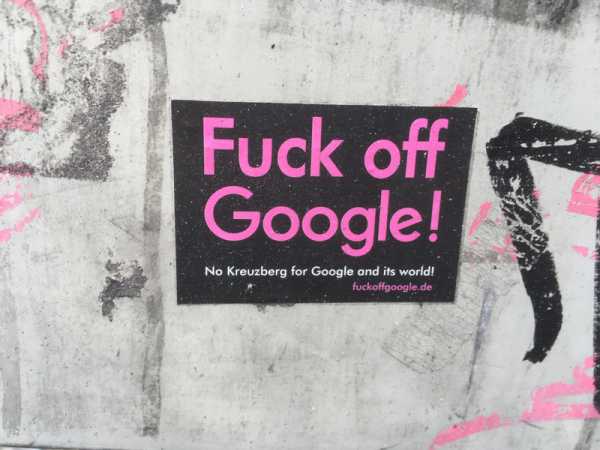
(Photo: Matthew Tempest)
As Big Tech arose, the news declined. It’s not controversial to assume that these two facts are related, but there is no consensus on how the decline of the news industry is related to concentration in the tech sector, let alone how policymakers intervene in the relationship between news and tech.
Broadly, critics of tech’s relationship to news fall into two camps. First, there are those who argue that tech is misappropriating the news, say, by indexing news stories inside of search engines, or by providing online forums where the public links to, quotes and discusses the news. This formulation suggests a simple answer: just create a new copyright in links to news stories and in the reproduction of headlines and quotations, and charge tech platforms license fees for access to the news.
This neatly encapsulates H.L. Mencken’s idea that “for every complex problem there is an answer that is clear, simple, and wrong.”
A new right to authorise references to the news, and quotations of discussions of the news is bad policy, stemming from a fundamental misunderstanding of the problem.
Money, not content
Specifically, this approach assumes that the “tech-news problem” is that tech is stealing news publishers’ content. But in truth, tech is stealing news publishers’ money.
Tech firms are highly concentrated, and have erected chokepoints between news publishers and their audiences. These chokepoints are the loci of highly extractive practices that are deceptive and unfair, and cannot be remedied by creating paracopyrights over headlines, quotes and links. Indeed, creating a new right to decide who can talk about the news and where will *worsen* the extraction problems, while weakening the urgent role of the news in holding tech to account.
Take the ad market. Online advertising is dominated by a duopoly of massive, vertically integrated American firms: Meta (formerly Facebook) and Google. Both firms run real-time auctions to decide which ad gets run during which session, at which price, and how much of that price will be delivered to publishers.
Google and Meta play multiple, conflicting roles in these auctions. Both companies operate ‘demand-side platforms’ which offer bids on behalf of advertisers. They also operate ‘supply-side platforms,’ that market discrete units of users’ attention to advertisers. They also operate the marketplace in which these supply-side and demand-side platforms meet to conduct business. On top of all that, both Google and Meta are advertisers, and both are publishers, competing directly with the advertisers and publishers who are also their customers.
These realtime bidding advertising marketplaces represent a vastly higher volume and value of transactions than any other market in the world, and yet they are subject to fewer checks against conflicts of interest than other high-stakes markets.
It’s as if a stock exchange was owned by a brokerage that was also an underwriter, and also owned several of the largest companies on its exchange, and was free to deploy all kinds of contractual restrictions and dirty tricks to force everyone doing business to use all of its services.
Given all of this, it’s no surprise that the majority of every ad euro spent online is retained by an ad-tech company. Google and Meta insist that the sky-high commissions and fees they extract as brokers for sellers and buyers on marketplaces they own merely represent a fair price for the value they provide, and not naked self-dealing.
But whenever these firms are investigated by regulators, there’s abundant evidence of rampant, shameless self-dealing. Consider Google/Meta’s illegal, collusive ‘Jedi Blue’ program to rig the ad market; or Facebook’s infamous “pivot to video,” a fraud that deceived publishers into spending billions financing the company’s bid to launch a YouTube competitor, whose failure precipitated the implosion of dozens of otherwise healthy news companies.
Policymakers have lost patience with exotic explanations of Google/Meta’s incredible margins. In the US, the AMERICA Act — whose bipartisan sponsors are an unlikely coalition that includes both Senator Elizabeth Warren and Senator Ted Cruz — would force Google and Meta to divest their conflicting units. Each company would have to decide whether to be a marketplace, a sellers’ agent, or a buyers’ agent, and shed the other business units.
Meanwhile the EU has announced its own intention to seek Google’s breakup on similar lines, for similar reasons.
Surveillance is bad for news, too
Shattering ad-tech would slash the bite that Google and Meta take out of news publishers’ bottom line, but there’s another way to shift even more money from tech’s balance sheets to publishers’ side of the ledger — a policy that will also make it harder for tech to claw back that value in years to come.
The internet is dominated by surveillance advertising, in which users are comprehensively spied upon by a toxic ecosystem of commercial actors who combine location data, clicks, searches, financial transactions, medical histories, biometric surveillance and other sources — down to data from gaze-tracking sensors in grocery stores that record which products you glance at.
These nonconsensual dossiers of ‘behavioural’ data are packaged by tech companies and marketed to advertisers, who use them to target ads in narrow (and creepy) ways: “Just show this ad to women within the walls of an abortion clinic” or “Just show this ad to teenagers who exhibit signs of depression.”
Ad-tech apologists argue that users like being spied on because they ‘value relevant advertising.’
This is nonsense: when users are given the choice to block surveillance, they overwhelmingly do. Apple’s iOS devices offer users a one-click opt-out from app-based surveillance. Ninety-six percent of iOS users have opted out (presumably the other four percent were confused — or on Meta’s payroll).
This feature cost Meta $10 billion in the first year it was available, but this doesn’t mean that we can simply trust the market to produce good privacy solutions. Not long after Apple rolled out its mobile surveillance blocking, tech journalists discovered that Apple continued to track users who opted out — for its own ad service.
Enforcing anti-surveillance laws like the GDPR, or passing national surveillance laws in countries (like the US) where tech lobbyists have long kept them at bay, would end behavioural advertising forever. Any advertising regime that requires active, continuous consent from users is dead on arrival, because users do not want to be spied on.
This will be good for the news, too. Once surveillance ads are dead, they will be succeeded by contextual ads. These are ads that are targeted based on the publisher’s content, not the user’s behaviour. Instead of advertisers bidding to have their ads run in front of users who exhibit specific traits, they will bid to put ads alongside material that relates to specific subjects. Contextual realtime bidding auctions make offers like, “I have a user whose IP address is located in Turin, who is reading an article about cycling — who will pay to show that user an ad?”
In studies, these contextual ads perform slightly worse than behavioural ads, but only slightly — about five percent (unsurprisingly, surveillance advertising companies have been wildly overselling their own products’ efficacy). But any losses in the clearing price of a contextual ad that replaces a behavioural one will be more than made up for by changes in who gets paid and how much.
Just look at Dutch public broadcaster NPO, which implemented contextual advertising across its online properties in 2018. A 2020 article in Wired details the transition, and the fact that the broadcaster saw revenue jump with double digit percentages year over year — simply by cutting out the middleman.
No publisher will ever know as much about its readers as a massive, surveillant tech company. This fact confers a durable, substantial advantage to tech when divvying up advertising revenue between platforms and publishers.
But no tech company will ever know as much about a publisher’s own content than the publisher itself.
That means that if publishers make common cause with their users to fight tech surveillance, they will be on both the right side of history, and the right side of their own financial interests.
Now do apps
There’s one important difference between the 21st Century news and its 20th Century ancestor: in the 21st Century, nearly all news is free of charge.
“If you’re not paying for the product, you’re the product” is one of those Menckenian answers “that is clear, simple, and wrong.” As Apple’s willingness to covertly surveil its own users after they explicitly opted out of surveillance shows, companies’ willingness to abuse their customers is held in check by regulation and competition — not by a quid pro quo where paying for something entitles you to decent treatment.
Further: there was never a golden age in which the majority of news publishers’ income came from subscribers or people handed over change to a newsagent. General interest news has always been funded by a mix of advertising and subscriptions.
That said: the collapse of subscription revenues made publishers wholly dependent on advertising — and thus placed them wholly at the mercy of ad-tech. Ever since Steve Jobs announced the iPad in 2010 and promised publishers a new income stream based on ‘micropayments’ generated by apps, publishers have chased direct payments from their audiences to augment or replace advertising revenues.
Sign up for EUobserver’s daily newsletter
All the stories we publish, sent at 7.30 AM.
By signing up, you agree to our Terms of Use and Privacy Policy.
There’s a lot to like about this model. From laid-off reporters starting niche or hyper-local news sites funded by dedicated readers to large news publishers like the New York Times finding millions in subscriber dollars, letting readers pay for the news has opened the door to mountains of high-quality journalism.
But when those subscriber revenues are collected through apps, 30 percent of that revenue is creamed off by another tech duopoly: Apple-Google, whose iOS and Android mobile operating systems power virtually every mobile device in the world. While normal payment processors charge 3-5 percent commissions to process online transactions, these two companies are able to extract ten times that amount.
The App Store Tax is only possible because app stores are locked to mobile platforms. Publishers who want to collect subscription fees through an app store can’t shop around for the best deal. On iOS, technical protection measures protected under EU and US laws prevent users from switching app stores. On Android, contractual bullying ensure that every mainstream device is sold with the Google app store preloaded, and deceptive “dark patterns” scare users away from switching to rivals.
The EU’s Digital Markets Act will (eventually) end this practice in Europe, forcing vendors to make it easy for users to switch app stores or ‘sideload’ apps they get on the web. In the US, a bill to force this called the Open App Markets Act died in the previous legislative session, but will likely be reintroduced.
Dropping the cost of taking in revenues direct from audiences from 30 percent to three percent will have a profound impact on news publishers’ bottom lines — indeed, it will shift certain kinds of news publishing from economically impossible to perfectly viable.
Social media is (deliberately) broken
Social media platforms, from Facebook to Twitter to YouTube to TikTok, universally engage in an unfair and deceptive practice. These platforms all offer users the ability to ‘subscribe’ to feeds from the accounts they want to hear from, but none of them reliably deliver publishers’ materials to the users who explicitly asked to see them.
Rather, these platforms hold publishers’ audiences to ransom, and either tacitly or explicitly demand that publishers pay (for ‘boosting’ or ‘verification’) in order to increase the likelihood that the things they publish will reach the people who want to receive them. This does not serve audiences, nor does it serve publishers: rather, it is a classic chokepoint tactic, in which a platform extracts value from both its business customers and its end-users to enhance its own bottom line.
The answer to this misappropriation lays in the earliest design principle of the internet itself: the “end-to-end principle,” (E2E) which holds that an intermediary’s first duty is to deliver data from willing senders to willing recipients, as quickly and reliably as possible.
When this is applied to ISPs, we call it ‘Network Neutrality.’
We don’t have a term for E2E when it is applied to social media, because we don’t apply E2E to social media platforms.
Instead, we let them line their pockets at the expense of publishers and their audiences. No legislature has proposed an E2E rule for social media, but such a rule would be an excellent policy, and not just because it would make social media better for publishers and audiences.
An E2E rule would also be simple to administer. Unlike other intermediary regulations, such as a rule requiring platforms to police ‘harassment,’ E2E does not turn on fact-intensive questions. An anti-harassment rule requires a common definition of harassment, a determination of whether a given incident meets that definition, and a finding as to whether the company was negligent in permitting such conduct to occur.
By contrast, determining whether a platform delivers content from willing senders to willing recipients is trivial and can be determined with simple experiments.
What’s more, an E2E rule is cheap to comply with and thus doesn’t constitute a ‘capital moat’ that preserves the dominance of the largest companies. Designing a social media service that delivers the things users ask for is easier and cheaper than designing a service that makes algorithmic determinations about what users will see, based on the platform’s own business logic. New market entrants — be they co-ops, nonprofits, or SMEs — won’t have to spend millions complying with an E2E rule.
Not that an E2E rule precludes algorithmic feeds: remember, E2E is the idea that you see what you ask to see. If a user opts into a feed that promotes content that they haven’t subscribed to at the expense of the things they explicitly asked to see, that’s their choice. But it’s not a choice that social media services reliably offer, which is how they are able to extract ransom payments from publishers.
Clear, simple and wrong
If we believe that providing forums for news quotation and discussion is theft, then we can end it by conjuring up a new copyright that lets news publishers decide who can link to and debate the news.
But such a rule wouldn’t prevent monopolistic tech platforms from continuing to hog the majority of ad revenues, nor from subjecting every in-app payment to a 30 percent tax, nor from ransoming publishers’ audiences to them for all the market will bear.
News you’re not allowed to freely discuss isn’t the news, it’s a secret.
A paracopyright on news linking and quoting has already been tried — in Germany and Spain, for example — and the platforms’ response was completely predictable: they simple stopped carrying the news altogether. Other countries, such as France, banned platforms from dropping news links, only to see their publishers enter into partnerships with tech platforms that promoted the tech platforms’ own dominance.
A new, related approach is to create ‘news bargaining codes,’ such as the one in use in Australia, which allows news publishers to form cartels and collectively bargain with tech platforms. These represent an improvement on paracopyrights, but carry the implicit (or explicit) threat of a ‘must-carry’ rule, in which tech companies can be forced to carry news stories, even when they disagree with them.
This may not seem like a big deal when the tech company is a giant platform like Google. But a must-carry rule potentially implicates smaller players who may wish to exclude publishers’ content based on partisanship or ideology, creating a situation where a progressive community search engine is forced to index (and pay for) content from far-right conspiratorial publishers.
Worst of all: a paracopyright/must-carry approach is a form of profit-sharing between Big Tech and the news, which makes the news dependent on Big Tech’s continued access to massive profits.
By contrast, reforming advertising, payments and social media will prevent Big Tech from claiming those profits in the first place, shifting value to the press. In that system, the press is not a ‘partner’ with Big Tech — it is Big Tech’s watchdog and adversary, able to hold tech companies to account without fearing that doing so will harm a future negotiation, or erode the profits tech remits to the news.
Source: euobserver.com



